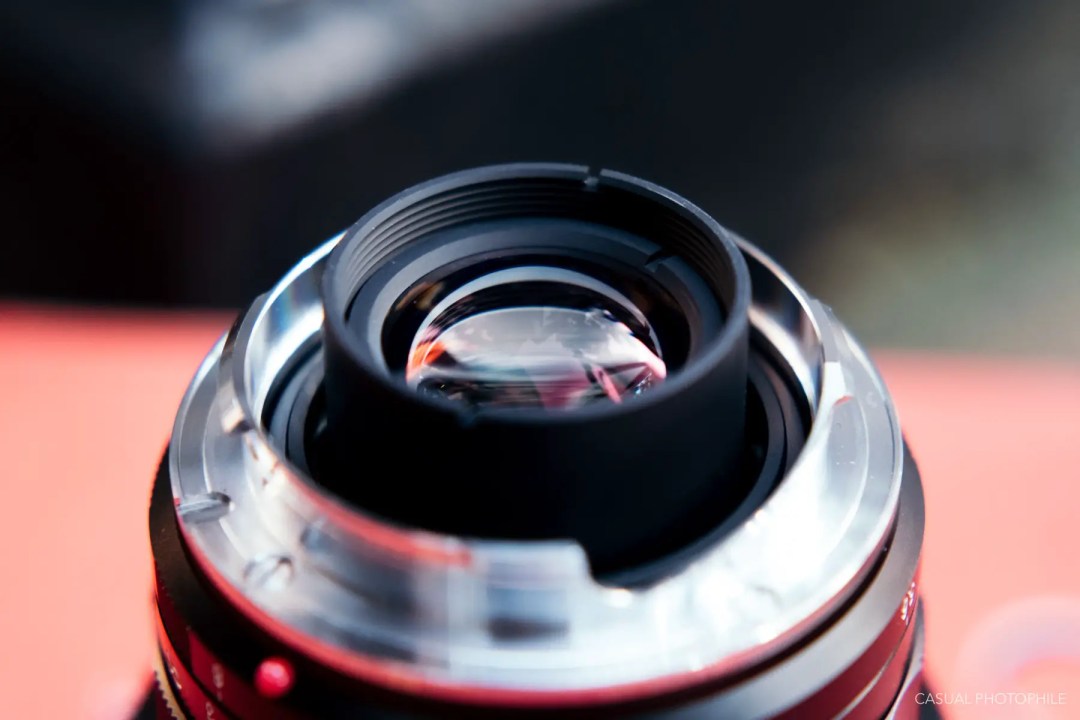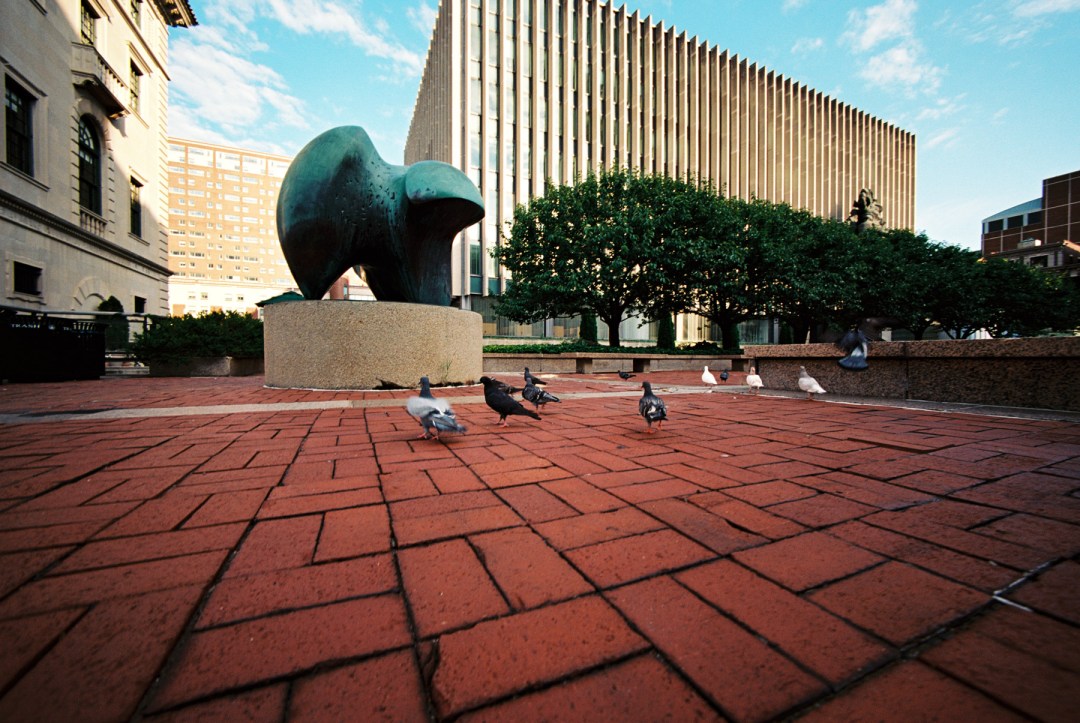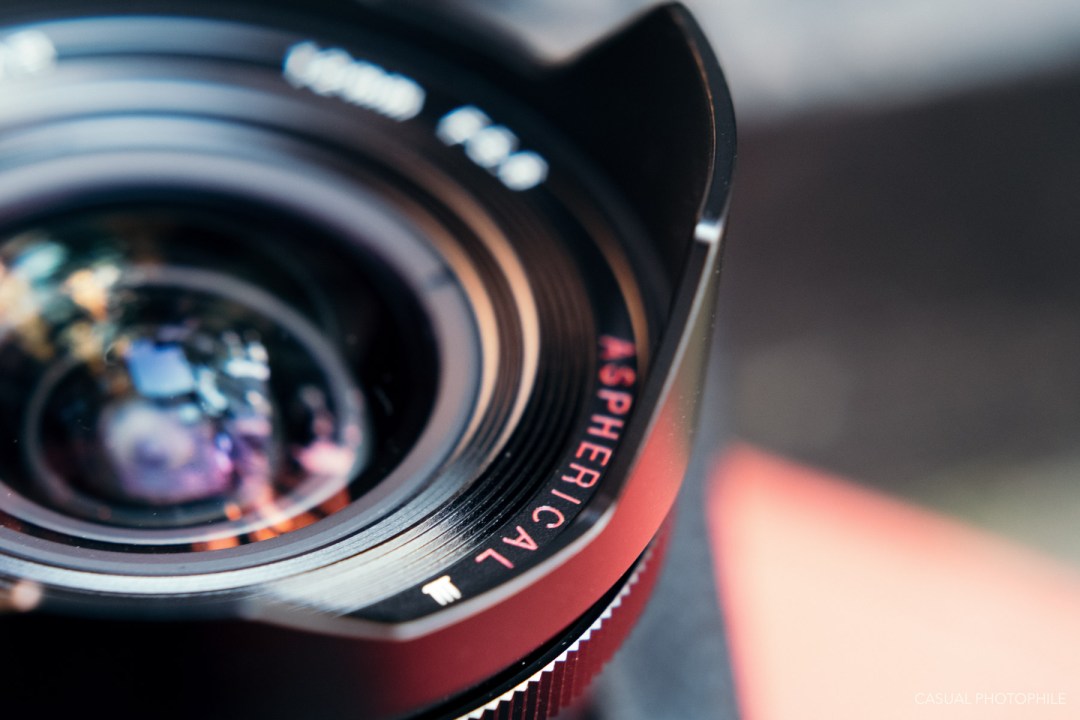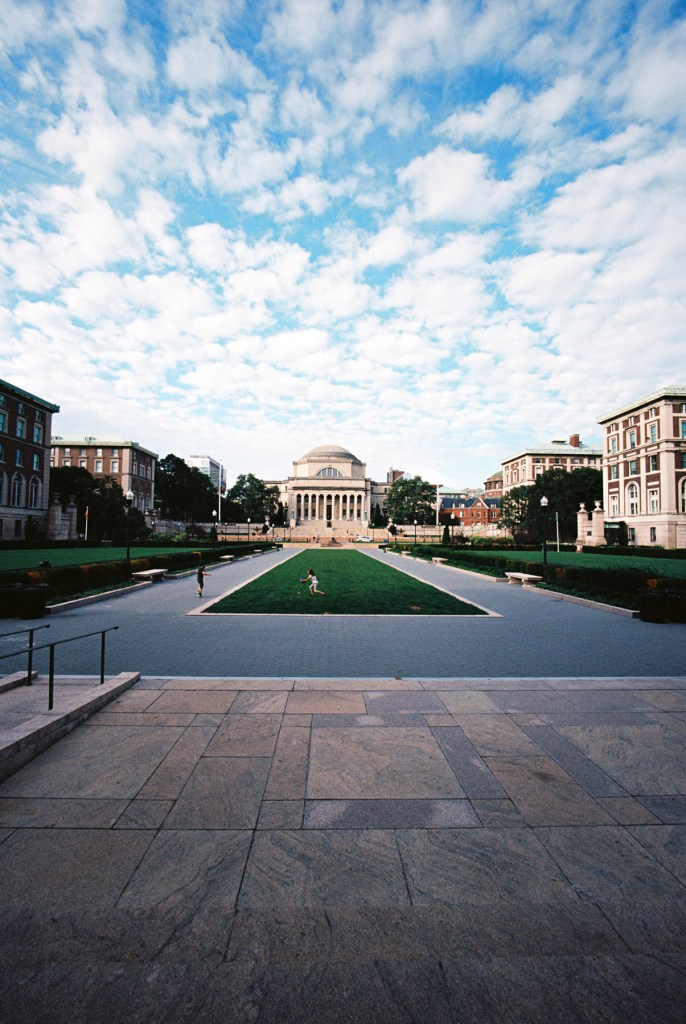I have been trying for no less than one hour to gather a list of which famous photographers used what focal lengths. There are the obvious ones: Henri Cartier-Bresson, Annie Leibovitz, and Diane Arbus with their 50s (or 50mm equivalents), Joel Meyerowitz with his 35mm, Steve McCurry with his 105mm (at least for his famous Afghan Girl), Garry Winnogrand with his 28, and so on. But the undeniable fact is that many of us use a 50mm lens, and for good reason—it’s a natural and versatile field of view.
Nowadays, many professional photographers use zoom lenses (Steve McCurry, for instance, now prefers a 24-70, as does Pulitzer Prize-Winning photojournalist Carol Guzy). But even these zooms stay within fairly standard limits.
In full-frame equivalent, how many of us have shot with something wider than a 28mm lens? Some pretty large percentage of readers’ hands drop. Okay, how about wider than a 20mm? We’re left with a slim percentage. Wider than 16? Now we’re really down to a rare few.
This is a review of the Voigtlander Ultra Wide-Heliar 12mm f/5.6 Aspherical lens for the M-mount, version III. 12mm on full-frame is about as wide as it gets, especially when we exclude the non-rectilinear designs known as fisheyes. Among this ultrawide echelon there’s the Fujifilm 8-16mm, which is equivalent to a 12-24mm on full frame and the mind-blowing Voigtlander Heliar Hyper-Wide 10mm for Leica and Canon. This year, James reviewed 7.5mm fisheye for Minolta, which is insanely wide but also extremely silly in that it produces orbs for images.
The truth is that 90% of my photos are in that sweet spot of 35-50mm. My favorite lenses are the Carl Zeiss Contax G 45mm, the Pentax Limited 43mm, The Carl Zeiss ZM 35mm, and the Carl Zeiss Hasselblad 80mm. (Can you tell I like Zeiss?).
So why shoot something as freaking wide as 12mm? Because it is so freaking wide.

First Things First
Cosina-Voigtlander (CV) is a popular lens maker for Leica-shooters particularly. Voigtlander offers an extensive M-mount lineup at far more affordable prices than Leica. Having shot a handful of Voigtlander lenses, I can say that contra the crowd, I am not overwhelmingly in love with the build of CV lenses. Oftentimes, I find the aperture and focus rings too loose for my tastes and the finger tabs for the aperture rings are often too thin to inspire awe of their quality. The Voigtlander Ultra Wide-Heliar 12mm f/5.6 Aspherical III lens is a general exception to this feeling, probably owing to the fact that the lens is a hefty chunk of metal. Weighing in at 10 ounces, this lens is what the meme-folk might call “thicc.”
Everything about the Heliar is oversized, from the beefy focusing ring with its Grand Canyon-esque knurls to the integrated petal-style hood. I think that heft can go a long way toward inspiring confidence in a lens that is not naturally as well finished as a Lecia lens might be.
The front element is also big, though not as large as the seductive glass of ultrawide fisheyes (seriously, is there anything more beautiful than the front element of the Minolta 16mm?). Surrounding the glass are concentric ridges that remind me of a recessed watch sub-dial.
In contrast to other M-mount Voigtlander lenses, the 12mm Heliar lacks the slim fin that acts as a finger tab for the aperture ring replacing it with a simple knurled ridge on otherwise smooth aperture ring. For me, this is an unobtrusive replacement for what I feel is not only an obtrusive piece but also an embarrassing one. The fin tab on other Voigtlander lenses reminds me of the flexible, plastic nose pads on wireframe glasses. Though it serves a purpose, it seems flimsy and distracts from the overall design.

As for the aspect that I am less enthusiastic about, I still take issue with the standard Voigtlander typeface design choices. Leica, I think, is perhaps the pinnacle of distinctive and unique typeface design when it comes to their lenses. In comparison to Leica with its unique orange numbering and its own variation of the standard Deutsches Institut für Normung (DIN) typeface, the Voigtlander seems clearly more boring.
But even compared to the Zeiss ZM lenses, the Voigtlander just doesn’t have much going for it. The typeface is as plain-Jane as any sans serif, the font is generally small, and the only two colors Voigtlander uses in any capacity are white and red (save for black).
I know I’m taking issue with something incredibly minor, but if not now, when? If not me, who? All in all, I find Voigtlander lenses to look like a black Hyundai Elantra in lens form.
Shooting Blind
Elanta or not, any good ride can be pimped out. The same is true for most lenses. In this case, you won’t be adding filters, but the easiest (some may essential) way to sex-up your wide angle lens is to use it in conjunction with an external viewfinder. In this case, any viewfinder with 12mm frame lines will work (though for most cameras, any finder with frame lines under 28mm will help).
External viewfinders are an undeniably neat photography accoutrement. It’s like having a lens with your lens in true Xzibit fashion. That said, a 12mm external viewfinder will set you back about 200 dollars. Is it worth it?
In all honesty, I can’t say, because I didn’t use any external viewfinder when shooting with this lens. What I can say, is that shooting blind was not an utter failure. The outer edges of my viewfinder essentially represent 26mm frame lines— a far cry from the 12mm frame lines I should technically have in order to accurately frame my shot.
Shooting blind is an awkward sensation, no doubt, but not impossible. The key refrain I kept in my mind while shooting was, “Remember, you’re getting so much more than you think.” My viewfinder provided to me what I essentially thought of as the center of my frame, and from there I then forced myself to consider what might be slipping into the periphery of the shot.
The second and third versions of this lens are rangefinder coupled, meaning that looking through my internal viewfinder did allow me to confirm focus. However, with a lens as wide as 12mm, almost everything is in focus all of the time, particularly since the lens aperture only opens up to f/5.6.
I cannot imagine using this (or any) lens without any framing whatsoever, but a normal viewfinder will get you enough of the way that you’re somewhere in between slicing sashimi with a splitting axe and slicing it with a yanagi.

Perspective, perspective, perspective
I recently moved from Boston to New York City to start a Ph.D. program at Columbia University. There is a total sense of strangeness to that fact not made the least less strange by the raging pandemic. The joke is stale by now, but Ph.D. by Zoom is not exactly what I had in mind in the years spent dreaming about this season of life.
I can’t say that I’m crushed by any aspect of the situation—I’m exceedingly lucky—but I can say that the walls of my apartment seem so much closer nowadays and that sitting at my desk in class feels increasingly claustrophobic.
It is hard for anyone to push their sight into frames other than their own. To do so is what we spend years teaching in school, be it seeing, for example, from the perspective of Okonkwo from Things Fall Apart, or, as another example, from the perspectives of Irish living through the Great Famine.
However, the main vocation each of us must come to intimate terms with is understanding what it means to see from own perspective. This is the task of self-understanding. When I shoot with my 43/45/50 lenses, I am in the mode of seeing naturally. It is through my eye that the image is composed, and that composition is inherently tied to what I see when I’m not looking through a viewfinder, that is, what I see normally.
With longer and shorter lenses, compression and expansion are introduced to our images and suddenly the images we’re producing are, at some level, unnatural. With a 12mm lens, the images produced are as removed from our eyes as I am removed from the experience of Okonkwo. But to produce an image with obvious difference from my normal images can be as rewarding as taking up Okonkwo’s frame of view through Chinua Achebe’s writing.



Armed with the expectation that the Heliar would produce images alien to my normal portfolio, I set out to a place that produces in me the sense of distance and awe I hoped the 12mm would: the main campus of Columbia.
The 32-acre Neoclassical campus is magnificent. I am vastly underqualified to describe it adequately, so I can only say that it is a place for me that is beautiful. I knew, of course, that the wider a lens is the more it is suited to architectural photography, so Columbia made total sense as a photographic destination.
As it turned out, I do feel that the Heliar captured the place better than my normal lenses had before. There is something so essential to feeling small amid places like Columbia (or inescapable, perhaps, at least for me) and the 121-degree field of view of the Voigtlander Heliar 12mm captures that sense of smallness perfectly.
In that way, the 12mm lens helped me feel the expanse that really surrounds me as I make this move to Manhattan and begin this particular program at this particular institution.
To buy or not to buy?
Sadly, I had to send this lens back to James as it was on loan from the wonderful folks at B&H. In the time since, I have not infrequently pined for its dramatic angles. Somehow, my 25mm Voigtlander doesn’t seem dramatic enough after having tasted the intoxicating substance of the Voigtlander Ultra Wide-Heliar 12mm f/5.6 Aspherical III lens.
I can say, since this is a review of the lens, that the images I got from it were extremely sharp without problematic flare, and that they were overall optically excellent. After all, the Mark III version of this lens introduces two more elements (in the same number of groups) over its predecessor for a Heliar design that is ultimately cleaner. And, of course, its aspherical element goes a long way in keeping abberations low.
The Mark I and Mark II versions seem to hover between $400-$500 on eBay, which, in my mind, is a great deal. Even for a new Mark III, you are still well under $1,000. If I had a standard lens I was in love with and had a secondary lens I used often (for me, those are my Zeiss 2/50 Planar and Zeiss 2.8/35 Biogon), I think an ultrawide lens is an easy third choice.
It’s just straight up wild in a way that is not as gimmicky as a fisheye lens or flat (literally) as an extreme telephoto lens. Throw in the fact that focusing is no biggie and you’ve got an easy to use lens which makes consistent dramatic results. You just have to get closer and closer to your subject until it works. If you can handle the fact that it gives off Hyundai vibes, I think it’s worth owning. I can entirely imagine that the next M-mount lens I’ll own will be this one.
















Hi Drew,
Here are a few others (documented by their notes or interviews)
David Douglas Duncan (while in Viet Nam) s/m 28mm Nikkor fitted to his M3 & 50mm f/1.4 Summilux;
David Allen Harvey (Nat’l. Geo. film work) 28mm & 35mm Leica lenses on his M6;
Jill Krementz basic kit was a 35mm lens on her Leica M4-2, 85mm lens on a Nikon FM and an Olympus XA;
Elliott Erwitt made his famous ‘snaps’ with a 50mm or 90mm lens on an Leica M3.
Dan Castelli works with a 35mm Summarit-M or a 35mm (f/3.5) Summaron on his M2.
Good pics – I love how the foreground ‘falls away’ and leads your eye toward the center of interest.
Good luck on your studies!